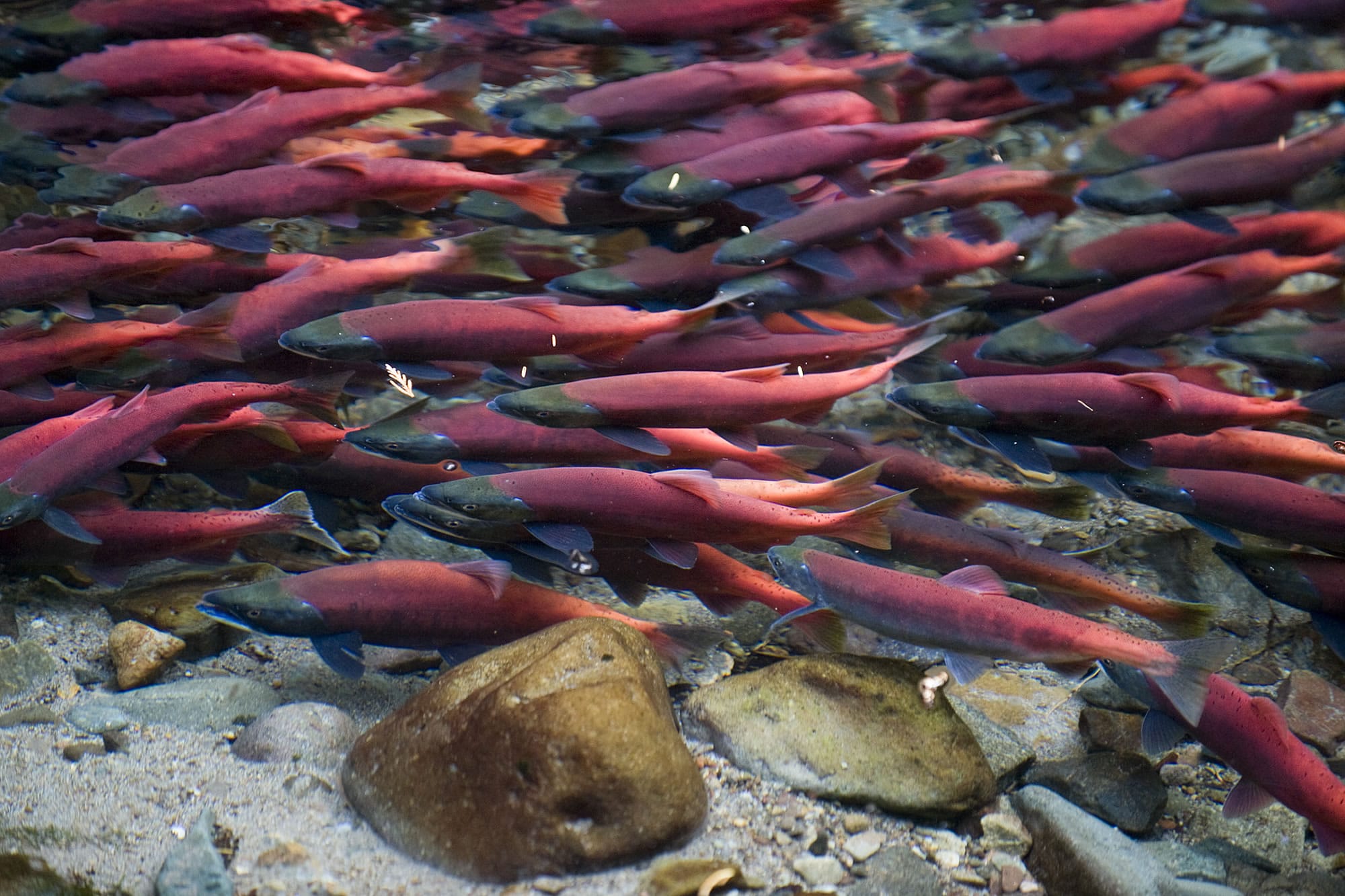PacifiCorp’s annual report on Yale Reservoir’s kokanee confirms what anglers learned by June — the fish were small in 2012.
Female kokanee spawning in Cougar Creek averaged 9 inches this fall, down from 10 inches a year ago. The average for 1978-2012 is 11.3 inches.
“On Memorial Day weekend, we caught a bunch of 9-inch fish in Yale,” said Richard Borneman, a veteran angler on the Lewis River reservoirs. “You don’t get much of fillet off a 9-inch fish. We never went back to Yale. The kokanee in Merwin are 12 inches or bigger.”
PacifiCorp technicians and biologists surveyed Cougar Creek six times during the fall for spawning kokanee. Their estimate is 57,845 of the landlocked salmon spawned in the Cowlitz County stream.
That number is better than the estimate of 45,103 in 2011 and the highest since 2003. It is much better than the 10-year average of 33,904, but well below the long-term average of 63,981.
The largest female kokanee measured was 249 millimeters, which is just less than 10 inches. The average female in 2011 was 254.9 millimeters.
For decades, virtually all kokanee in Yale Reservoir originated in Cougar Creek.
But in 2012, it is estimated almost 40,000 kokanee spawned in the North Fork of the Lewis River between Swift powerhouse No. 2 and the dam.
A channel has been constructed in that reach of river, plus more water is being released near the Swift No. 1 powerhouse, resulting in additional spawning areas for kokanee.
Forty percent of the spawning occurred outside Cougar Creek.
Traditionally, Yale’s kokanee population has had cycles of rising and falling, with larger fish when the population was down.
From 2005-2011, the population did not seem to follow that trend, according to the PacifiCorp report.
Kokanee are not a high management priority for either PacifiCorp or the state Department of Fish and Wildlife. The population reproduces itself naturally and management is mostly limited to the spawning surveys each fall.
Many factors including predation, low reservoir productivity due to murky water or dam operations, disease and competition could be affecting the population.
“It is difficult to quantify each factor and its specific effect on kokanee,” the report says in its conclusion.




